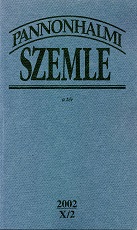Űr vagy megélt tér? Gondolatok az építészeti térről
Void or Real Space? (Some Thoughts on Architectural Space)
Author(s): András FerkaiSubject(s): Cultural history
Published by: Pannonhalmi Főapátság
Keywords: Space; Architectural Space; Sacred Space; Church Architecture; Hans van der Laan; Rudolf Schwarz
Summary/Abstract: In the fifties and sixties, an entirely new understanding of space emerged that was diametrically opposed to the concept of space inspired by science and technology. Both Rudolf Schwarz and Hans van der Laan responded to this challenge by developing their own architecture of the Sacred. In the middle of the 20th century architectural form was defined neither by living tradition nor by scientific formula. Led by this experience, Schwarz began to explore timeless and archetypical elements in architecture. According to his view, neither the use of historical forms of expression nor the imitation of structures in nature is necessary to express those eternal elements. Rather, the architecture's own order (Gestalt) is to be elaborated. Schwarz adds that, though the experience of space is of both a visual and acoustic nature, the sensation of material qualities is no less part of our perception. Rudolf Schwarz's architectural concept can most accurately be demonstrated in his religious buildings. This same statement can be applied to the Dutch Benedictine monk and architect Hans van der Laan. In his opinion, the very essence of architecture is to mediate between men and nature, and between personally experienced space and the infinite natural space beyond human existence. It is from this philosophical point of view that he maps out the basic elements and types of architecture. His masterwork is the extension of the Vaal Abbey (1956-1986).
Journal: Pannonhalmi Szemle
- Issue Year: 2002
- Issue No: 2
- Page Range: 019-027
- Page Count: 9
- Language: Hungarian

